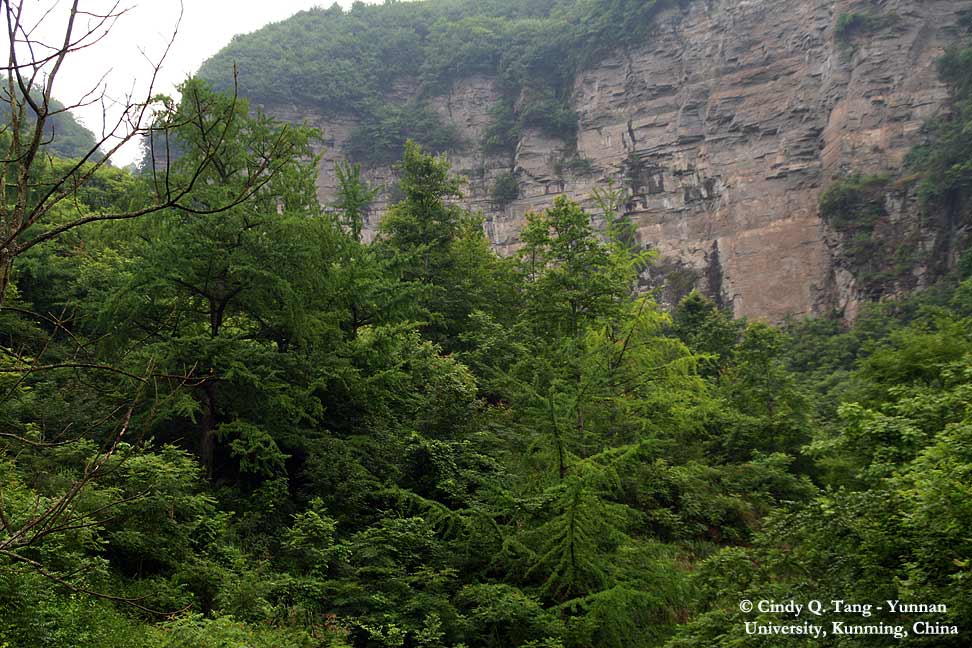
wild Ginkgo biloba forest, 35 m height, limestone, Yangjiagou, Nanchuan County
Wild
Ginkgo biloba
Dalou
mountains, southwestern China
Questions
about the extent of Ginkgo biloba’s native range in China have been the
subject of debate among botanists for several decades.
Evidence
for the persistance of wild Ginkgo biloba (Ginkgoaceae) populations in
the valley and lower mountain slopes of the Dalou mountains in southwestern
China was published in 2012.
Wild
Ginkgos have been found in Dalou mountains, located between Guizhou Province
and Chongqing Municipality, southwestern China (27°43'44"- 28°56'14"N;
107°15'53"- 108°04'46"E; altitude 840-1200 m a.s.l.).
Extant
Ginkgo populations in the valley and lower mountain slopes of the Dalou
Mountains represent fragments of the original natural Ginkgo range. The
area is a glacial refugium for these natural fragments. The climate is
subtropical, warm and humid.

wild Ginkgo biloba forest, 35 m height, limestone, Yangjiagou, Nanchuan County
The
floristic composition of these Ginkgo forests shows that of 31 genera
of canopy tree species in the present forests, 25 are also found in the
Ginkgo biloba-bearing fossil records. The trees in the study sites are
limestone outcrops near creeks and are subject to frequent natural disturbances.
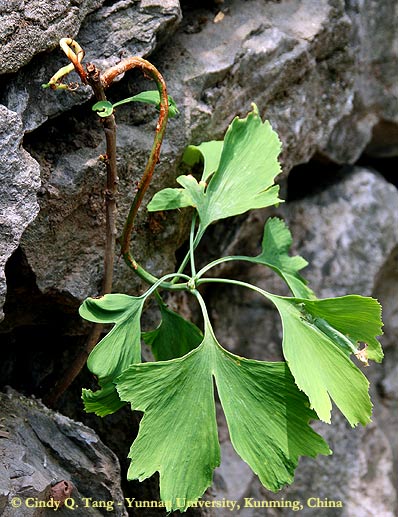 Ginkgo biloba seedling thriving
in sun-exposed
|
location Ginkgo biloba
|
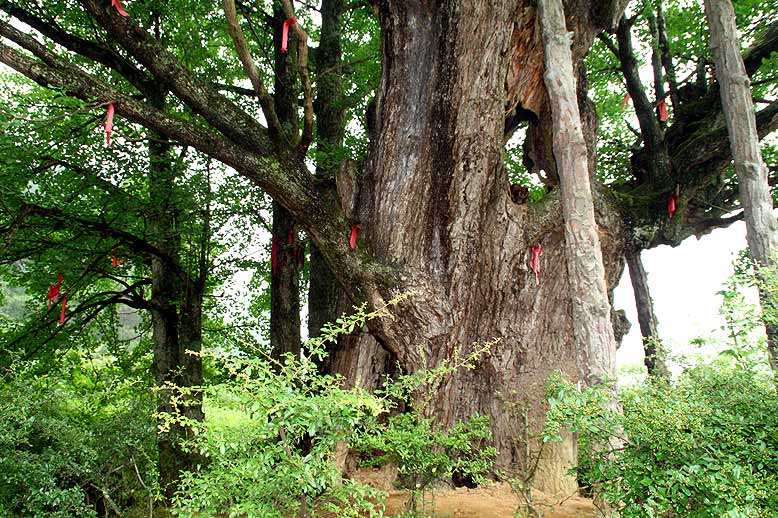
Ginkgo biloba tree (based on
tree-ring analysis, the age was about 878 years in 2011)
with many sprouts, a feng shui
tree with red cloth strips hung by villagers for good luck
Maopo, Nanchuan County
photo: Cindy Q. Tang
In
these rocky inhospitable areas there have been no human settlements during
the Ming dynasty (1368-1644). The Gelao people are indigenous to the area
and they have strict traditional taboo against either planting or
logging Ginkgo trees. Han people began to appear in 1664, and they seem
to have shared or agreed with the taboo of the Gelao. They believe that
having forests near their farmhouses is good feng shui so they have not
cut down the Ginkgo trees.
A
factor in the survival of the ancient Ginkgo forests must have been the
belief in feng shui.
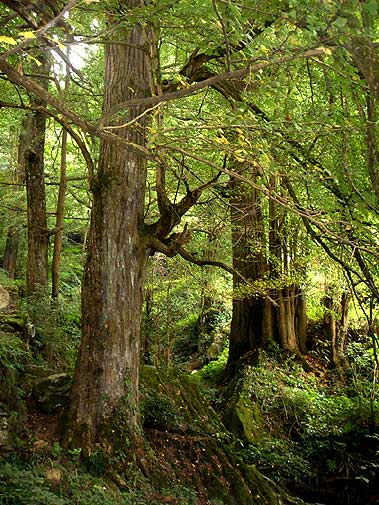
Forest of wild Ginkgo biloba
trees, 38 m height, limestone
|
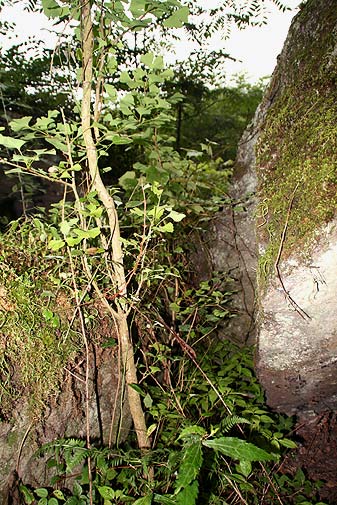
Ginkgo biloba sapling growing
in limestone crevices
|
Ginkgo biloba trees are on the UNEP-WCMC List of Threatened Species.
|
Evidence for the persistence of wild Ginkgo biloba (Ginkgoaceae) populations in the Dalou Mountains, southwestern China. Tang CQ, Ohsawa M, Su WH, Zhang
ZY, Peng MC, Wu ZL Institute
of Ecology and Geobotany, Yunnan University, Kunming 650091, China
Premise of the study:
The possible persistence of wild Ginkgo biloba populations in China has
long been debated but never scientifically confirmed. We test our hypothesis
that the extant Ginkgo populations in the Dalou Mountains (SW China) represent
fragments of the original natural Ginkgo range and offer a range of pertinent
perspectives on the living fossil Ginkgo's history, prehistory, ecology,
and place in human culture-all important aspects of this highly valued
species.
American Journal of Botany 2012 Aug;99(8):1408-14. Epub 2012 Jul 30. doi:10.3732/ajb.1200168 |
With
thanks to Cindy Q. Tang, Professor of Plant Ecology,
Institute
of Ecology and Geobotany, Yunnan University, Kunming, China.
Photos © Cindy Q. Tang, Yunnan University,
Kunming, China;
Yongchuan Yang, Chongqing University, Chongqing,
China.
Update 2015: Book by Cindy Q. TangThe Subtropical Vegetation of Southwestern China, Plant Distribution, Diversity and Ecology , Springer 2015.
2018: Cindy Q. Tang et al. Identifying long-term stable refugia for relict plant species in East Asia, Nature Communications| (2018) 9:4488.
2019:
Zhao, Yun-Peng et al. Resequencing 545 ginkgo genomes across the world
reveals the evolutionary history of the living fossil. Nature Communications
10, art.4201, 2019.
More photos of Ginkgo trees in China: click here.
© Cor Kwant